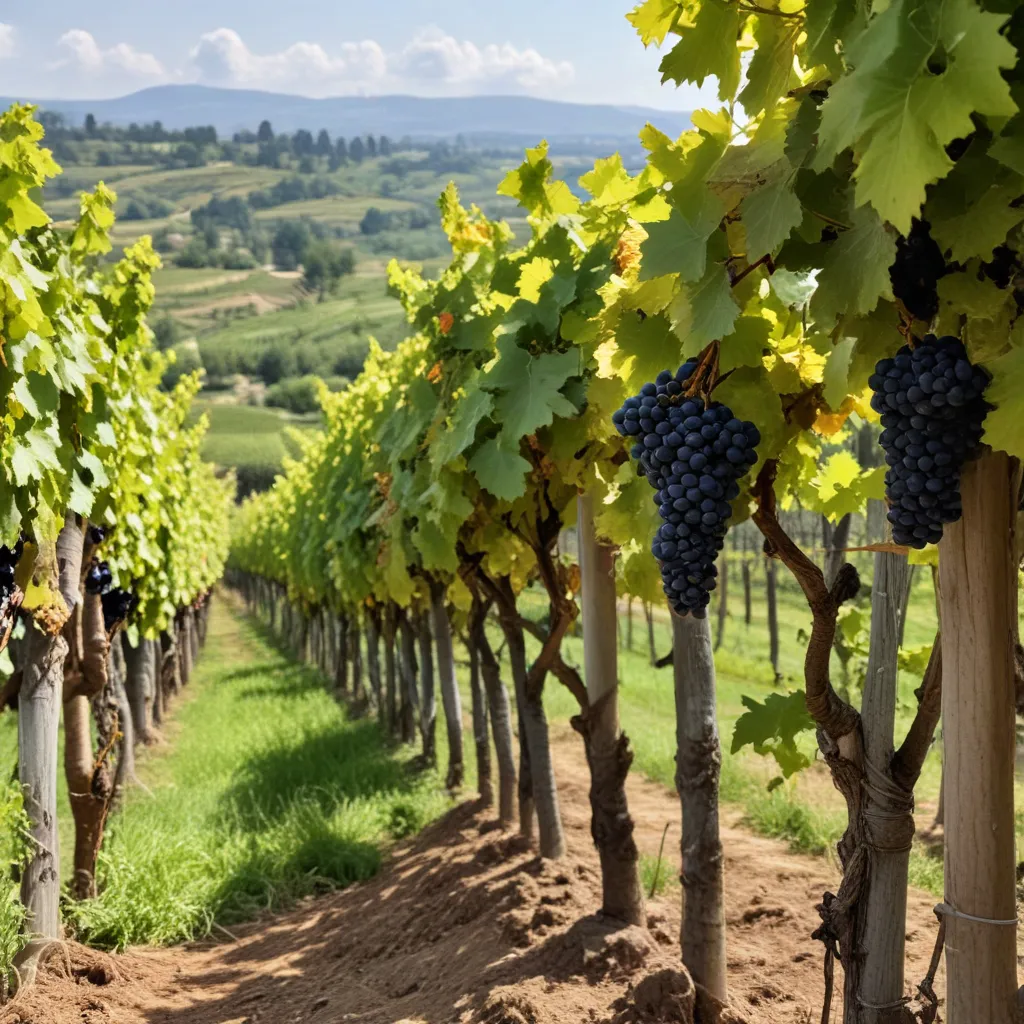
The art of winemaking is deeply intertwined with the forces of nature, as grape growers and vintners navigate the intricate relationship between their craft and the ever-changing climates that shape their vineyards. From the rolling hills of Bordeaux to the sun-drenched slopes of Napa Valley, the character of each vintage is a testament to the delicate balance between the land, the weather, and the skilled hands of the winemaker.
Terroir and Wine Character
At the heart of this dynamic lies the concept of terroir, a term that encompasses the myriad environmental and cultural influences that contribute to the unique qualities of a wine. Derived from the French word “terre,” or land, terroir recognizes that the very essence of a wine is rooted in the interplay between the soil, the climate, and the human touch.
The French Appellation d’Origine Contrôlée (AOC) system, established in 1935, is a prime example of how terroir has been institutionalized to protect and promote the geographic identities of agricultural products, including wine. While the natural components of terroir – weather, geology, and soil – are undoubtedly significant, the human element of terroir is equally crucial, as winemakers leverage their knowledge and techniques to coax the most compelling flavors from the land.
Microclimates and Viticulture
At the heart of this relationship between climate and wine lies a complex tapestry of factors, each playing a vital role in shaping the character of the final product. From the macroscale of hemispheric weather patterns to the microscale of individual vine rows, the nuances of climate exert a profound influence on the growth and maturation of grapes.
One of the most critical aspects of climate in viticulture is the average temperature during the growing season, which can range from a cool 55°F to a warm 70°F. This temperature range not only determines the suitability of certain grape varieties to a given region but also influences the development of key flavor compounds and the balance between sugar and acidity – the very foundation of a wine’s taste profile.
Beyond average temperatures, the diurnal temperature range – the difference between daytime highs and nighttime lows – can also have a significant impact on a wine’s character. Cooler-climate wines, such as Pinot Noir, often thrive in regions with higher diurnal ranges, as the contrast between warm days and cool nights helps to preserve freshness and acidity while allowing for the gradual development of complex aromas and flavors.
Vintage Variation and Flavour Profiles
While the overall climate structure of a region shapes the broad suitability of grape varieties, the vintage-to-vintage variation in weather conditions can dramatically influence the flavour profiles of a wine. A particularly cool or wet growing season, for example, may result in a lighter, more elegant style, while a warmer, drier vintage can produce bolder, more fruit-forward wines.
These vintage variations are not merely a matter of preference; they reflect the intricate balance between a grape’s natural characteristics and the environmental factors that allow – or hinder – their full expression. A Cabernet Sauvignon from Bordeaux’s Médoc region, for instance, can range from a restrained, herbaceous offering in a cool year to a rich, concentrated powerhouse in a warm vintage.
Grape Varietals and Winemaking
The interplay between climate and grape varieties is a delicate dance, with certain cultivars thriving in specific environments while struggling in others. Chardonnay, for example, is renowned for its versatility, producing crisp, apple-driven wines in cooler climates and richer, more tropical-fruit-influenced expressions in warmer regions. In contrast, Pinot Noir is a more finicky variety, requiring a narrow range of growing conditions to achieve its characteristic elegance and complexity.
Beyond the inherent characteristics of grape varieties, the winemaking techniques employed can also shape a wine’s final profile. The decision to undergo malolactic fermentation, for instance, can transform a wine’s acidity, softening the tart malic acid and imparting a creamier, more supple mouthfeel. Similarly, the judicious use of oak aging can lend structure, spice, and a subtle vanilla-like creaminess to a wine, further enhancing its interplay with the grape’s natural flavors.
The Impact of Changing Climates
As the global climate continues to evolve, the wine industry is facing new challenges and opportunities in maintaining the delicate balance that defines the character of each vintage. Observed warming trends have led to earlier grape maturity, resulting in higher sugar levels and lower acidity – a shift that can disrupt the harmonious interplay of a wine’s components.
Furthermore, the increased frequency and intensity of extreme weather events, such as late spring frosts, heavy rainfall, and prolonged droughts, pose additional threats to grape growers and winemakers. These climatic variations can have a profound impact on yields, grape quality, and the very suitability of certain regions for specific grape varieties.
Sustainable Viticulture Practices
In response to these challenges, wine producers around the world are adopting innovative vineyard management strategies and exploring alternative grape varieties to adapt to the changing climate. From the use of cover crops and precision irrigation to the introduction of heat-tolerant or early-ripening cultivars, the industry is steadfastly working to maintain the integrity of its beloved vintages.
Beyond the vineyard, the winemaking process itself is undergoing a transformation, with a greater emphasis on energy-efficient technologies and sustainable practices. From the use of solar power and waste recycling to the implementation of lighter-weight bottles, the wine industry is leading the charge in minimizing its environmental footprint.
As we raise a glass to the ever-evolving character of wine, we are reminded of the profound influence of climate – a force that has shaped the diversity and richness of the world’s vineyards for centuries. By embracing the lessons of the past and adapting to the challenges of the future, winemakers and grape growers alike are ensuring that the vitality of vintages continues to captivate and delight wine enthusiasts the world over.
